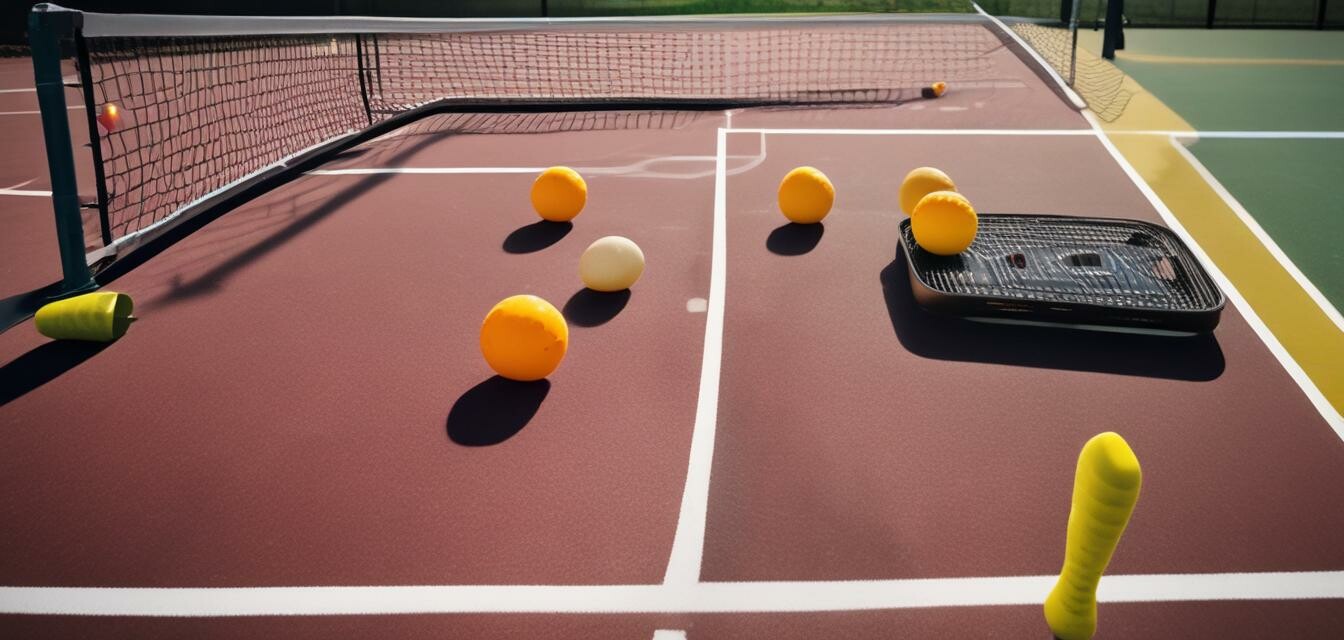
Creating a Balanced Training Schedule for Pickleball
Key Takeaways
- A balanced training schedule encompasses skill development, strength training, and strategic play.
- It is essential to incorporate various drills and activities to enhance overall performance.
- Adjusting your schedule for recovery is just as important as the training itself.
Designing a comprehensive training plan can significantly enhance your performance on the pickleball court. Whether you're looking to refine your skills or gain a competitive edge, a structured approach will ensure you cover all essential aspects of the game. In this guide, we'll explore how to create a balanced training schedule that integrates skill, strength, and strategy.
Understanding the Components of a Training Schedule
A well-rounded pickleball training schedule should focus on three key components:
| Component | Description |
|---|---|
| Skill Development | Focus on the technical aspects of the game, including strokes, footwork, and court positioning. |
| Strength Training | Enhance physical abilities such as agility, endurance, and power to improve overall performance. |
| Strategy and Tactics | Analyze gameplay and develop strategies to outsmart opponents, including court placement and shot selection. |
Creating Your Training Plan
When creating your training plan, consider the following steps:
- Assess Your Current Skill Level: Identify your strengths and weaknesses to tailor your training.
- Set Clear Goals: Define what you want to achieve, whether it's improving your serve or enhancing your overall fitness.
- Schedule Regular Sessions: Aim for consistency by scheduling practice sessions throughout the week.
- Include Rest Days: Allow time for recovery to prevent injuries and enhance muscle healing.
- Adjust as Necessary: Be flexible with your plan based on your progress and feedback.
Sample Weekly Training Schedule
Here’s a sample weekly training schedule that balances all three components:
| Day | Activity |
|---|---|
| Monday | Skill development: Drills for serves and volleys |
| Tuesday | Strength training: Core and lower body workouts |
| Wednesday | Strategy: Practice match situations and court positioning |
| Thursday | Skill development: Footwork drills and backhand practice |
| Friday | Strength training: Upper body and agility exercises |
| Saturday | Gameplay: Compete in friendly matches or local tournaments |
| Sunday | Rest day: Focus on recovery and mental strategies |
Additional Tips for Effective Training
Tips for Beginners
- Start with basic skills before advancing to complex drills.
- Stay hydrated and maintain a balanced diet to fuel your training.
- Seek feedback from experienced players to improve your game.
- Join a local pickleball community for encouragement and support.
Staying Motivated
Staying motivated throughout your training is crucial. Here are some strategies to consider:
- Track your progress and celebrate small victories.
- Change your routine to keep it interesting and challenging.
- Set short-term and long-term goals to maintain a sense of purpose.
Conclusion
Creating a balanced training schedule for pickleball involves a blend of skill development, strength training, and strategic gameplay. With a structured plan and the right mindset, you can enhance your performance and enjoy the game even more. For further tips and tactics to improve your game, check out our Tips & Tactics section.
Pros
- Improved overall performance and confidence
- Structured training leads to measurable progress
- Increased enjoyment of the game
Cons
- Time commitment can be challenging
- Potential for fatigue if not properly managed


